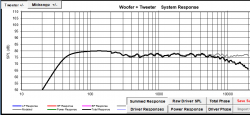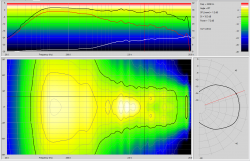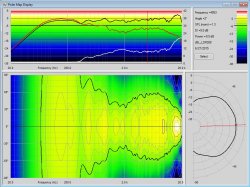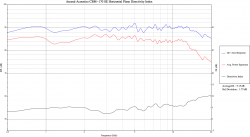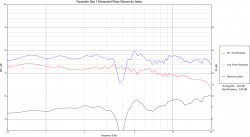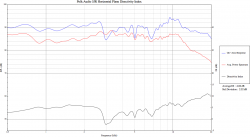Matthew J Poes
AV Addict
Thread Starter
- Joined
- Oct 18, 2017
- Messages
- 1,903
I was talking with a reviewer friend of mine about some of the potential issues of listening to a sound system without any measurements. That we might perceive a deficit in the system as an enhancement without even realizing it.
Just as an example, it is possible that large dips in the bass at certain frequencies might give us the sense of tighter bass because there would be a lack of bass in the region that we perceive as boominess. Without a point of reference (a smooth response) and knowledge of how bass should sound, it may be difficult to know. Certainly when listening to the vast majority of 2 channel subwooferless systems, you would have major dips in the bass caused by things like SBIR.
My friend pointed out that a rise or prominence in certain parts of the treble region may give a speaker the perception of being more detailed and resolving, when in fact its simply inaccurate. Designers looking to capitalize on that may intentionally voice a speaker with this treble bump.
A dip in the midrange can give the sense of a deeper soundstage.
Phase inaccuracies between speakers can give a sense of a wider soundstage.
The list goes on in how psycho-acoustically we can trick our brains into hearing things we want to hear, even if they are not in fact accurate.
I'm curious what others think. Certainly when it comes to speakers, there is no definitive right. If you like it, it's right! If a speaker has the above mentioned deficiencies and someone likes it, that is certainly fine. What if this becomes a prominent part of professional reviews? What if they like or dislike a speaker in their room, but the issue is really an interaction with the room acoustically?
One thing I like about AV NIRVANA is that we have been publishing in room measurements of a speaker we are listening to. While the in room measurements may not tell us what the speaker measures like under anechoic conditions, it can tell the reader if the speaker was playing nice in the reviewers room.
Just as an example, it is possible that large dips in the bass at certain frequencies might give us the sense of tighter bass because there would be a lack of bass in the region that we perceive as boominess. Without a point of reference (a smooth response) and knowledge of how bass should sound, it may be difficult to know. Certainly when listening to the vast majority of 2 channel subwooferless systems, you would have major dips in the bass caused by things like SBIR.
My friend pointed out that a rise or prominence in certain parts of the treble region may give a speaker the perception of being more detailed and resolving, when in fact its simply inaccurate. Designers looking to capitalize on that may intentionally voice a speaker with this treble bump.
A dip in the midrange can give the sense of a deeper soundstage.
Phase inaccuracies between speakers can give a sense of a wider soundstage.
The list goes on in how psycho-acoustically we can trick our brains into hearing things we want to hear, even if they are not in fact accurate.
I'm curious what others think. Certainly when it comes to speakers, there is no definitive right. If you like it, it's right! If a speaker has the above mentioned deficiencies and someone likes it, that is certainly fine. What if this becomes a prominent part of professional reviews? What if they like or dislike a speaker in their room, but the issue is really an interaction with the room acoustically?
One thing I like about AV NIRVANA is that we have been publishing in room measurements of a speaker we are listening to. While the in room measurements may not tell us what the speaker measures like under anechoic conditions, it can tell the reader if the speaker was playing nice in the reviewers room.









